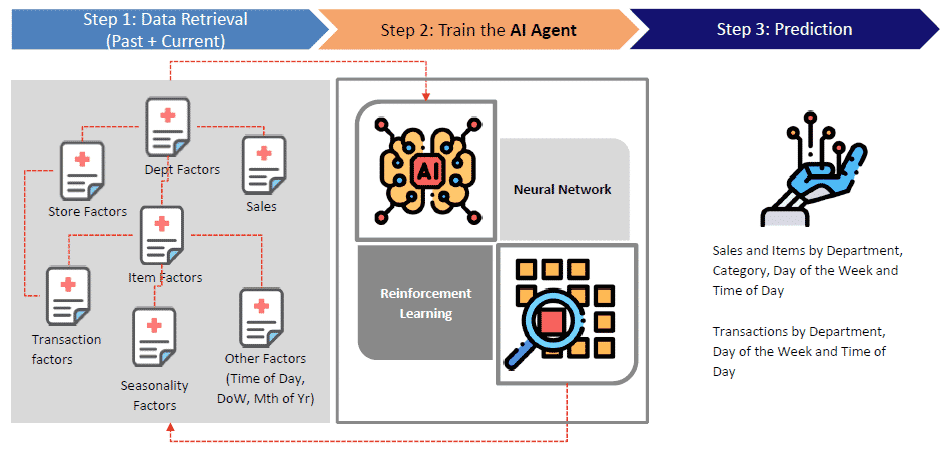
Heard of predictive workload but still unclear of what it is all about? Read this article for a step-by-step breakdown on how Workforce optimizer leverages AI to construct predictive models for its clients.
Step 1: Data Retrieval (Past + Current)
To kick-start the process, organization data across the various functions have to be consolidated, and this allows stakeholders to consolidate fragmented data across all functions; providing a cross-functional engagement of data.
This is built on the premise that every organization deals with a wealth of data at every point of its various functions. For example, seasonality demands differ across types of produce and timing of the day affecting the crowd levels or even the types of good consumers purchase (i.e. demand for fresh produce would be highest in the morning). Here, they are multiple factors (time, demographics, etc.) that affect a single function; this mammoth task can now be handled by the system.
Step 2: Train the AI Agent
After the organization’s data is fed to the AI Agent, the software functions like a neural network or a brain that “learns” and “studies” all the information, deconstruct and dissect it to discover patterns, trends that can be found amongst the data. It can also map the correlation between different factors (i.e. how seasonality and sales cycles affect each other on different products).
Reinforcement learning forms an important part of the process by acting as the point where the brain or neural network “understands” the information given to it. It allows the agent to automatically determine the best possible output within a specific context, in order to achieve maximized performance. In other words, it is the process whereby the “brain” processes the information fed to it and then builds upon this “understanding” to attain a higher level of learning.
Step 3: Prediction
With this higher level of “learning”, the agent can then provide deeper level of understanding and analysis on the data it was provided – identifying and forecasting future trends and patterns.
What predictive workload model offers, is an assessment of growth and profit opportunities, and possible trade-off scenarios of different strategies across the various functions of the organization. It enables decision-makers to have a holistic view of the organizational elements, and thus identify areas for potential optimization. And if strategies are executed accurately, this would gift organizations with a good standing to prepare for the future business environment.
*Illustration is a copyright of Workforce optimizer
Follow us on LinkedIn.





